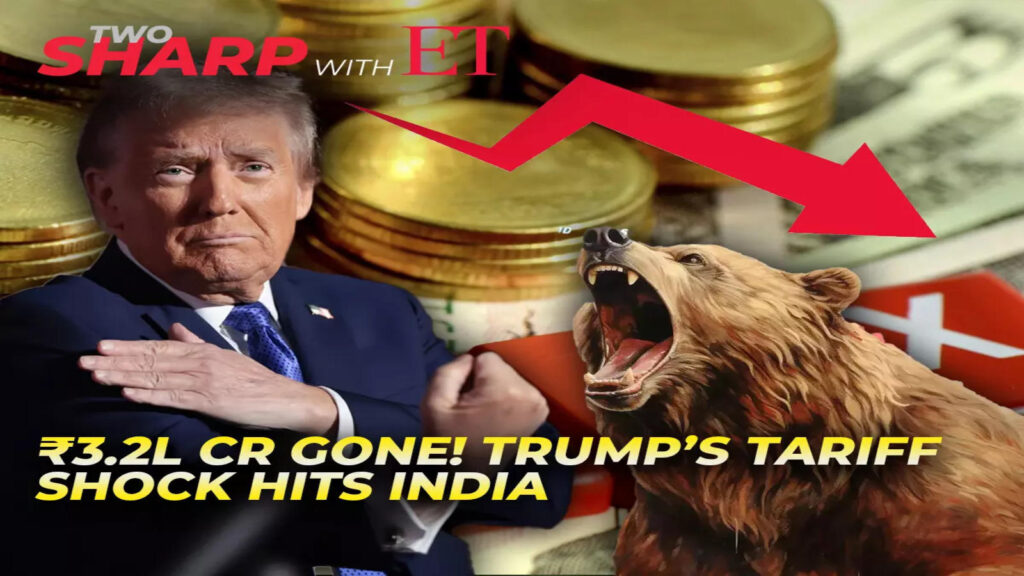By K Raveendran
It is curious that Indians have learnt of New Delhi’s willingness to cut tariffs for American goods from President Donald Trump rather than an official statement from the Modi government. It is as though charmed by Trump’s personal warmth towards Prime Minister Narendra Modi, India has conceded without putting up a fight. The fact that such a significant policy shift has been revealed by Washington rather than New Delhi raises concerns about the transparency and strategic prudence of India’s trade negotiations.
According to reports from Washington, India has agreed to the Terms of Reference for the Bilateral Trade Agreement with the US following an intervention from the Prime Minister’s Office (PMO). Critics doubt if New Delhi has been going the extra mile to accommodate Trump’s requirements, many of which have turned out to be whimsical in the early days of his second presidency itself. India’s approach towards the trade deal has raised pertinent questions about whether the country is negotiating from a position of strength or ceding more ground than necessary.
There is no doubt that some of India’s tariff rates may not appear justifiable from a third party’s point of view. The country has long maintained high tariffs in sectors such as agriculture, dairy, and automobiles, citing the need to protect domestic industries. However, the big question is whether India has yielded more ground than what would be considered fair from all perspectives. The decision to reduce tariffs on American goods must be scrutinized in terms of its broader implications for domestic industries and the overall economy. If India’s tariffs were indeed unreasonably high, then some reduction might have been warranted. However, the manner in which this decision has been communicated and the potential one-sided nature of the agreement make it imperative to examine whether India has secured adequate reciprocal concessions.
New Delhi has already agreed on the terms of reference for the bilateral trade agreement, negotiations for which are expected to start in the next round. This early agreement on the framework suggests that India may have made significant commitments even before formal negotiations have begun. Such a move could be seen as undermining India’s bargaining power, as it gives the US an upper hand in dictating the terms of the final deal. The concern here is not just about tariff reductions but also about the broader structural aspects of the trade agreement, including market access, intellectual property rights, and regulatory alignments.
With the US having mounted extra pressure by producing a report that is particularly critical of India, New Delhi’s bargaining power appears to be weakened further. The US has historically used such reports as tools of leverage in trade negotiations, highlighting perceived barriers to American exports and investment. If India’s response to such pressure is to concede ground without robust counterarguments or reciprocal demands, it sets a worrying precedent. The broader implications of such an approach could extend beyond the immediate trade agreement to future negotiations with other global economic powers.
India’s trade policy has traditionally aimed at balancing the interests of various stakeholders, including domestic industries, consumers, and geopolitical considerations. In this context, the current developments raise concerns about whether New Delhi is adequately safeguarding its economic interests. The lack of an official statement from the Modi government adds to the uncertainty, as it prevents a clear understanding of the rationale behind these concessions and the expected benefits for India.
A key aspect that requires further examination is the impact of these tariff reductions on Indian industries. Sectors that have historically enjoyed protection through higher tariffs may face increased competition from American imports. While competition can drive efficiency and innovation, abrupt tariff cuts without adequate preparation can harm domestic producers, particularly small and medium enterprises. The government must ensure that any tariff reductions are accompanied by measures to support affected industries, such as policy incentives, capacity-building programs, and transitional support.
Additionally, India must assess whether the US is offering commensurate benefits in return for these concessions. Trade negotiations should be based on the principle of mutual benefit, ensuring that both parties gain from the agreement. If the US is merely securing lower tariffs for its exports without providing India with enhanced market access for its goods and services, then the agreement may not be in India’s best interest. Sectors such as information technology, pharmaceuticals, and textiles are crucial for India’s export economy, and any bilateral trade deal should secure favourable terms for these industries.
Furthermore, geopolitical considerations play a crucial role in trade negotiations. India and the US share strategic interests in countering China’s economic influence, strengthening defence cooperation, and fostering technological collaborations. While economic agreements can reinforce these strategic ties, India must ensure that its economic sovereignty is not compromised in the process. Trade agreements should be structured in a manner that aligns with India’s long-term economic and geopolitical objectives rather than being driven by short-term political considerations.
The way forward for India should involve a more transparent and strategic approach to trade negotiations. The government must communicate its trade policy decisions more effectively to domestic stakeholders, ensuring that businesses, policymakers, and the public understand the rationale behind these moves. Engaging in a thorough cost-benefit analysis before committing to tariff reductions and other trade concessions is essential to protect national interests.
India should also strengthen its negotiating capacity by leveraging its economic strengths. As one of the world’s largest consumer markets and a key player in global supply chains, India has significant bargaining power that should be utilized effectively. Engaging in trade negotiations from a position of confidence rather than perceived deference will ensure better outcomes for the country.
The role of parliamentary oversight and expert consultations is also critical in shaping trade agreements that serve national interests. Trade policies should be formulated through inclusive discussions that take into account the perspectives of industry leaders, economists, and policymakers. The current approach, where major trade decisions appear to be made behind closed doors and revealed through foreign sources, does not inspire confidence in the process. (IPA Service)

 CPI General Secretary D Raja Underlines Principled Unity Of All Communists To Fight RSS-BJP
CPI General Secretary D Raja Underlines Principled Unity Of All Communists To Fight RSS-BJP 